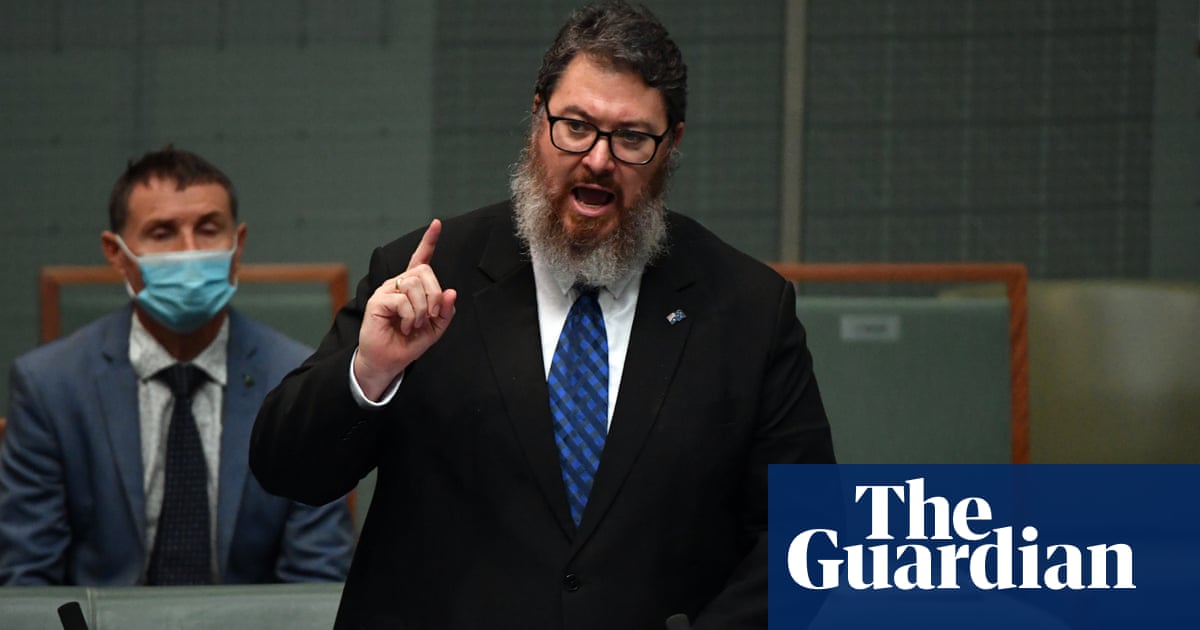
Show caption George Christensen in his final speech to parliament. His departure from the LNP illustrates the challenges facing the Coalition in the upcoming election. Photograph: Mick Tsikas/AAP Queensland politics Living on the wedge: why the Coalition faces threats from left and right in Queensland All the attention has been on Labor’s struggles in the state, but the LNP could face challenges on two fronts in the upcoming election Ben Smee @BenSmee Fri 8 Apr 2022 21.00 BST Share on Facebook
Share on Twitter
Share via Email
In the space of an hour on Thursday night, two Queensland Liberal National stalwarts made announcements that shook the party from the right, and then the left.
First, George Christensen announced he had formally left the LNP – ending a political farce that has seen the retiring federal MP for Dawson slide deeper into far-rightwing anti-government conspiracy, all the while remaining a member of the government.
Soon after, the Bundaberg mayor, Jack Dempsey – a former state police and Indigenous affairs minister – announced he would run as an independent in Hinkler, a seat held by the resources minister, Keith Pitt.
Other than their former party affiliation, Christensen and Dempsey have little in common. But the announcements have some in the LNP worried about its ability to present a coherent federal election campaign message in a deeply complex state.
Bundaberg mayor Jack Dempsey, who is challenging resources minister Keith Pitt for the Queensland seat of Hinkler. Photograph: Jack Dempsey Facebook
Queensland has always presented as an oddity to outsiders; for more than three decades, with only a few rare exceptions, the state has voted for the Coalition at federal elections, and for Labor to run its state government.
One of the reasons – and there are too many to delve into completely here – has been the troubled merger of the Liberal and National parties in Queensland, which created a state party with a church of competing ideologies so broad that “everyone sings their own hymn and the noise just sounds awful”.
Christensen’s seat is centred on Mackay and the Whitsunday region. There’s no other stretch of Queensland coastline that better explains how complex the state is to navigate politically.
Mackay is a Labor town: working class, Catholic and socially conservative. Some locals are coalminers, others are cane-growers. Drive a little farther north to Airlie Beach, and you’ll meet tourism operators who make their living on the climate-threatened Great Barrier Reef. The next stop is Bowen, the shipping hub for Adani’s Carmichael coalmine.
Meanwhile, Dempsey is running in Hinkler, a seat that takes in the retirement mecca of Hervey Bay and his home town of Bundaberg. Just this week, the Queensland government rejected plans for a coalmine near Bundaberg – an announcement that was broadly welcomed in the community.
The mayor of Bundaberg says the LNP has become “obsessed with coal” and that his community has genuine climate change concerns. I’m hearing similar things about Gladstone and Townsville. Momentum for climate action is building in some of these places, as communities start to grasp that a new economy can also mean new job opportunities.
Queensland politics can be confusing to outsiders. Often different messages are required to woo voters in neighbouring towns. Relying on binary definitions like city/region or coal/climate is far too simplistic.
A lot was made of Labor’s 2019 federal election campaign in Queensland and the impact of its attempts to “walk both sides of the street” on issues like the Adani coalmine. Labor campaigners think the direct impact of Adani is overstated – the real issue was the way the party ran a macro-level campaign that didn’t resonate anywhere, rather than using tailored messaging in different parts of the state.
The “Queensland paradox” – the need to tell voters different things in Toowong and Townsville – is most often framed in national debate as a problem for Labor.
But it will be fascinating to watch how the Coalition attempts to avoid being skewered by that same wedge; particularly as the party finds itself under pressure from both the right – Clive Palmer, Pauline Hanson, Campbell Newman and Christensen are all former party members and darlings of the fringe – and also from a moderate defector like Dempsey.
Show more
Every move to shore up Dawson or Flynn (where the LNP candidate, Colin Boyce, believes renewable energy is a “fantasy”) could come at political cost to city-based Liberals such as Trevor Evans in Brisbane or Julian Simmonds in Ryan.
There is a lot of movement required to shift LNP incumbents in many Queensland seats, particularly the stretch of bellwether electorates running from central to north Queensland. Swings were so large in 2019 that many LNP members went from tight margins to very comfortable ones.
But at the same time, the form book means nothing in Hinkler, where Pitt has a 14% margin but is now running against a mayor who won 64% of the popular vote in Bundaberg.
Ditto in Dawson, where Christensen’s brand of Catholic/DLP politics won him personal support among longtime Labor voters.
In his resignation statement, Christensen made clear his issues with the LNP’s broad church.
“The party needs to undertake some serious soul-searching about what – and who – it stands for,” he said.








